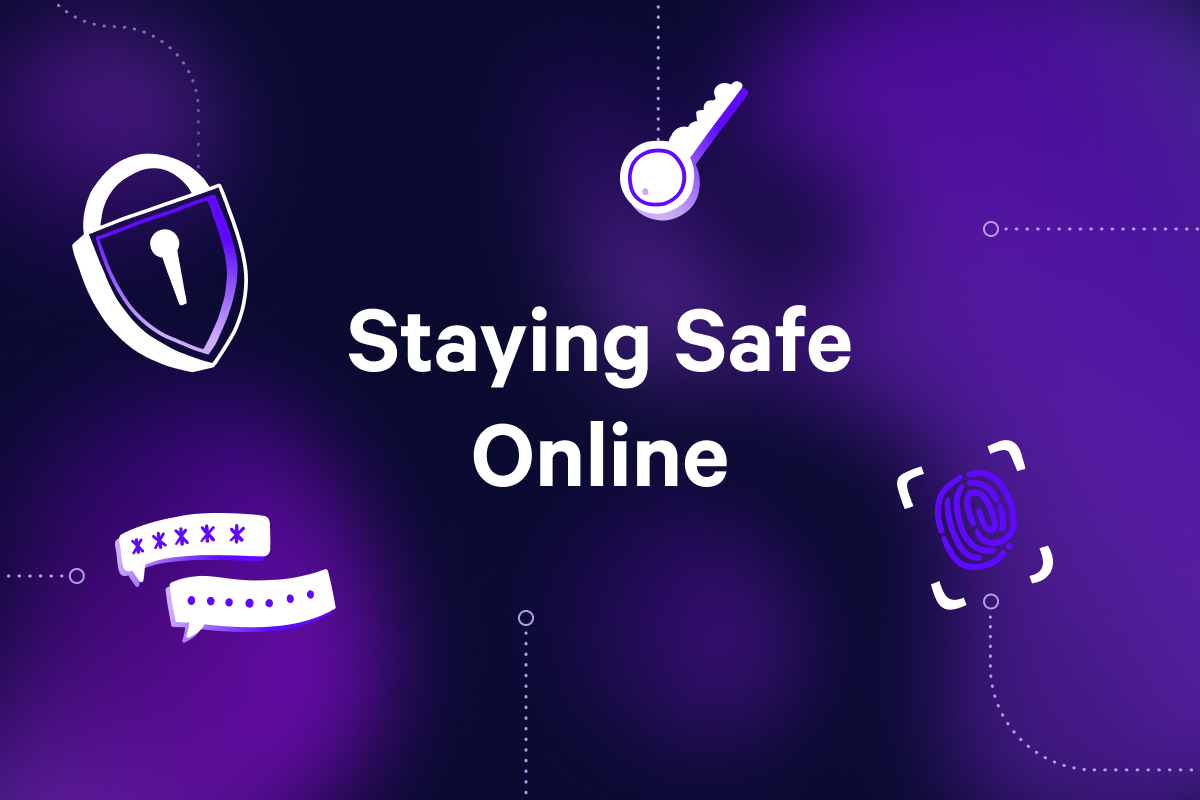Modern consumers expect, and demand, convenience.
Mobile apps and web portals allow us to manage everything from our banking and home utilities to the weekly food shop, online. All at a time that suits us… And from the comfort of our bed, if we feel like it 🙈
This trend was further accelerated by the pandemic, which led to increased adoption of digital banking services in the UK. But as banking scams and online fraud also become more prevalent, it’s more important than ever to protect yourself by considering your online safety and cybersecurity.
With this in mind, let’s take a look at some common types of internet scams, and how you can avoid online fraud.
What is online fraud?
Online fraud can take different forms, depending on which service or function you’re attempting to access.
In its simplest form, you could be tricked into buying fake or stolen goods, or you might pay for goods that never arrive.
Bank scams, phishing attacks, and identity theft can be more sophisticated in their approach, yet they’re also commonplace, unfortunately.
Banking fraud
These types of scams often involve a banker's cheque and can start with an apparent ‘overpayment’ being made to you, or an attempt to get you to divulge the numbers at the bottom of your personal checks.
Keep a particular lookout for cheques with small print on them. Any terms and conditions written on the cheque are warning signs it could form a legal contract if you then pay it into your bank account.
In general, if someone asks you to help them cash a cheque or if you receive any unexpected money via cheque in the post, alarm bells should ring ⏰
Think very carefully before paying cheques from people you don’t know into your bank, or parting with any cash in exchange for uncleared cheques.
Phishing scams
A phishing attack is a very specific type of fraud in which scammers may use a fake text, email or website to try and trick unsuspecting customers into revealing their sensitive personal information, such as login credentials.
The texts and emails can be quickly sent to large numbers of people, and are designed to create the impression that they’ve been sent by a known and trusted company who is already known to the victim.
Messages will typically contain a link which asks you to enter personal information. And once the scammers have your details they can use them to steal your identity (see below).
Identity theft
To have your identity stolen means that fraudsters have used your personal details to obtain finance/credit in your name.
They can go about stealing your identity by opening bank accounts, taking out credit cards or store cards and entering into mobile phone contracts. All with the aim to run up as much credit as possible, before their activity can be flagged as suspicious and shut down.
Identity theft can have a devastating impact and place long-lasting stress on the victim. If lenders believe you’ve failed to repay what was agreed, it will be noted on your credit report. That can affect your credit score and chances of obtaining finance in the future, so it’s crucial to stay safe online.
How to stay safe online
There are no hard and fast rules when it comes to online security.
Each individual will have their own idea of how far to take e.g. password security, in terms of password complexity and how frequently they schedule a password refresh.
1. Strong and Unique Passwords
The importance of strong passwords in online banking cannot be overemphasised. Using strong and unique passwords for each online account is one of the most important ways to help keep yourself safe.
Passwords that are common and easily guessable should be avoided. Instead, use a combination of letters (upper and lower case), numbers, and symbols to construct complicated passwords.
Also, while it may not be mandatory, scheduling regular password updates is a great way to help maintain optimum security!
If you want to go one step further, you can consider enabling Multi-factor authentication. For example, two-factor authentication (2FA) is a security method that requires two forms of identification to access certain services.
Often this means you’ll need to enter your password and then a randomly generated code that's either sent to your device or generated by an authenticator.
2. Be wary of Phishing Attempts
You should never share your personal details or passwords with anyone.
Be wary of any emails, texts, or phone calls requesting personal or financial information. Legitimate organisations will never request sensitive information from you in unannounced ways.
Check the sender's email address and website URLs carefully before you click on any links, and be generally suspicious of any urgent or unexpected communication from your service providers.
3. Monitor account activity
It’s wise to schedule regular time to examine your account statements and transactions for any unauthorised activity or anything that doesn’t look right.
Many services will allow you to customise security notifications so you can keep track of odd or suspicious account behaviour.
4. React immediately
If you’re no longer in possession of your bank card or mobile phone (either because you can’t find it or you know it to be stolen) it’s crucial that you notify the appropriate institution or service provider right away.
If your mobile device is lost or stolen then securing your email account is also of utmost importance. Your email address serves as the gateway to your digital identity, so will likely be linked to numerous online accounts, such as your online banking and two-factor authentication for other services.
You can use another device (another phone, a laptop or a tablet) to log out from your email and other services like banking apps. This can prevent a fraudster from accessing and using services using saved credentials.
5. Education and Awareness
Here at Plum, we can speak from experience when we say technology progresses fast! And as technology evolves, so do the techniques employed by criminals, looking to utilise that tech for their own nefarious ends.
Thankfully, you can stay ahead of scammers by keeping informed about the latest online security threats and best practices for digital security.
How is my money protected with Plum?
There are two types of security that help keep you safe when you use Plum.
The first is the technology in the app itself, where we use biometric authentication (we support Face ID and Touch ID) and 256-bit TLS encryption to keep things secure 🔒
The second type of security relates to the regulation of the financial services that you access through Plum. This includes deposit insurance like the Financial Services Compensation Scheme (FSCS).
You can learn more about how your money is protected with Plum here.
Download Plum
